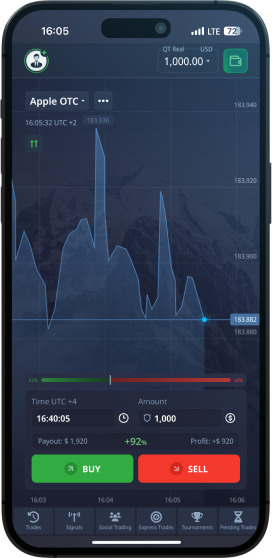Mastering Pocket Option Scalping Strategy for Successful Trading

Mastering Pocket Option Scalping Strategy for Successful Trading
The pocket option scalping strategy pocket option scalping strategy has emerged as one of the most popular trading techniques for forex and binary options traders alike. Scalping involves making numerous trades throughout the day to capitalize on small price movements, often within minutes or even seconds. In this comprehensive guide, we’ll explore the nuances of the Pocket Option scalping strategy, providing you with practical tips to enhance your trading experience and possibly increase your profitability.
What is Scalping in Trading?
Scalping is a short-term trading strategy designed to exploit small price fluctuations in highly liquid markets. Traders who adopt this approach, known as scalpers, aim to make numerous trades throughout a single day, holding each position for a very brief period. The goal is to accumulate small profits that, when combined, can lead to substantial earnings. While scalping may seem simple, it requires discipline, quick decision-making, and a solid understanding of market dynamics.
Why Choose Pocket Option for Scalping?
Pocket Option is a renowned trading platform that caters to scalpers due to its unique features and flexible trading environment. Here are several reasons why traders prefer Pocket Option for scalping:
- User-Friendly Interface: Pocket Option offers an intuitive interface that is accessible for both beginners and seasoned traders.
- Multiple Assets: The platform supports a variety of assets, including forex, commodities, and cryptocurrencies, allowing traders to diversify their portfolios.
- Fast Execution: Scalping necessitates quick trade execution, and Pocket Option provides rapid order placements, which is crucial for this strategy.
- Demo Account: New scalpers can practice their trading strategy using a demo account without risking real capital.
Key Elements of a Successful Pocket Option Scalping Strategy
To effectively implement a scalping strategy on Pocket Option, traders should consider the following key elements:
1. Timeframes
Scalpers typically operate on short timeframes. In Pocket Option, the 1-minute and 5-minute charts are popular among scalpers. Choosing the right timeframe is crucial, as it influences how quickly you can make trading decisions.

2. Technical Analysis
Understanding technical analysis is vital for scalping. Scalpers rely heavily on chart patterns, indicators, and price action to identify potential entry and exit points. Popular indicators for scalpers include:
- Moving Averages: Helps to identify trends.
- Bollinger Bands: Useful for spotting price volatility.
- Relative Strength Index (RSI): Indicates overbought or oversold conditions.
3. Risk Management
Effective risk management is crucial to the survival of any trading strategy. Scalpers should set strict stop-loss orders to minimize potential losses. Consider risking only a small percentage of your trading capital on each trade, which will help you endure bad trading sessions without significant damage to your account.
4. Market Conditions
The overall market conditions significantly impact the effectiveness of a scalping strategy. Ideally, traders should focus on high volatility periods, such as during major news releases or market opens, when price movements are more pronounced.
Steps to Execute a Scalping Strategy on Pocket Option
Here’s a step-by-step approach to executing your pocket option scalping strategy:
Step 1: Set Up Your Trading Environment
Ensure that you have a stable internet connection and a reliable device. Set up your Pocket Option account and familiarize yourself with the platform’s features.

Step 2: Choose Your Assets Wisely
Pick a few currency pairs or assets to focus on. It’s advisable to choose assets that have high volatility and liquidity, as these features will provide more opportunities for quick trades.
Step 3: Analyze the Market
Utilize technical analysis to identify potential trading opportunities. Look for patterns, support and resistance levels, and use indicators to confirm your analysis.
Step 4: Place Your Trade
Once you’ve identified a good entry point, place your trade. Scalpers should aim to set a realistic target for profit based on the asset’s price action.
Step 5: Implement Strict Risk Control
As mentioned earlier, have your stop-loss orders in place before entering a trade. This tactic helps safeguard against unexpected market movements.
Common Mistakes to Avoid When Scalping
Even experienced traders can fall prey to mistakes when scalping. Here are some common pitfalls to avoid:
- Overtrading: It’s easy to get caught up in the excitement of scalping; however, overtrading can lead to exhaustion and poor decision-making.
- Ineffective Risk Management: Failing to set stop losses or risking more than you can afford can quickly deplete your trading account.
- Lack of Discipline: Scalping requires a disciplined approach. Deviating from your strategy due to emotions can lead to significant losses.
Conclusion
Implementing a pocket option scalping strategy effectively takes practice, discipline, and a solid understanding of market dynamics. As you embark on your scalping journey, remember to rely on sound technical analysis, practice rigorous risk management, and choose the right market conditions to maximize your trading success. With continuous learning and experience, you can refine your strategy and approach, ultimately leading to more consistent profits.
Scalping may not be for everyone, but for those who thrive in high-stakes, fast-paced environments, it can be a rewarding way to engage with the markets. Keep honing your skills and always be on the lookout for new opportunities that align with your trading plan.


